-
Posts
624 -
Joined
-
Last visited
Content Type
Profiles
Forums
Store
Help Articles
Posts posted by Shiewie
-
-
Some food vendor and street market pics I took on a recent short stop-over in Cairo:
Street market in Islamic Cairo, near the Al-Azhar Mosque
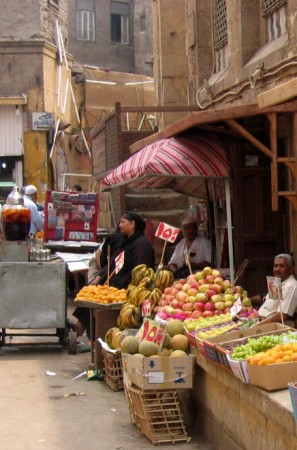
Horse cart with a load of watermelons

Water jugs - these are place along the street for whoever who needs a cool drink
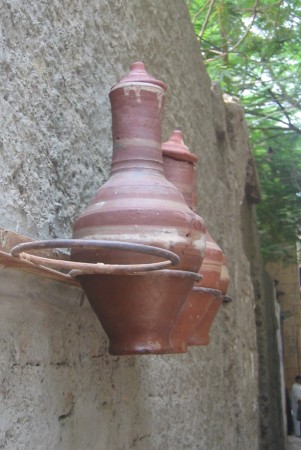
Street-side drinks vendor
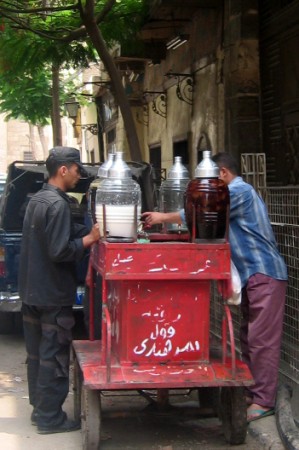
Bread vendor near the Al-Azhar Mosque
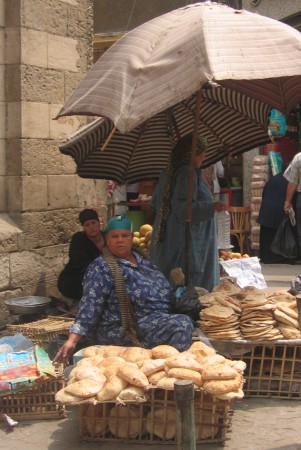
More bread

Street cafe for backgammon, shisha and coffee / mint tea

Snacks anyone? Are these semit?
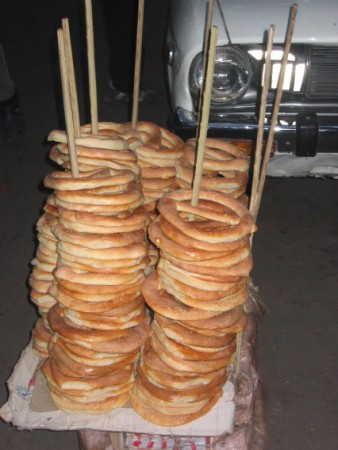
-
Thanks for the report tazerowe.
Abu El Sid has several outlets in Cairo - you can find a list of the outlets here.
inespm, not sure whether you've left for your trip yet, but here are links to restaurant reviews and a recent article for more dining options for your trip.
-
Hi foodieme
Impressive effort with the kuih lapis.
Here's your Pulut Udang recipe translated into English
Filling
100 gm prawns
4 dried chiiles
2 lemongrass
10 shallots
½ tsp fennel
1 Tbsp cooking oil
Sugar
Salt
900 gm glutinous rice
1 coconut
Salt
Banana leaves
Lidi (vein of coconut fronds)
Cut the prawns into small pieces.
Grind the dried chillies (soak them first) with the fennel.
Mince the the lemongrass and shallots finely.
Heat the cooking oil and add the ground dried chilli and cumin mixture and stir.
Add the grated coconut, lemongrass, salt, sugar, prawns and shallots.
Stir till cooked, then set aside.
Soak the glutinous rice overnight. Clean and steam till cooked.
Mix the cooked gultinous rice with the coconut milk to which some salt has been added.
Soften the banana leaves (by soaking it in hot water or passing it over the flame of a stove) and cut the banana leaves into rectangles of 7.5 x 15 cm.
Place 2 tbsp of glutinous rice onto a cut banana leaf and press the rice into a flat layer.
Place some filling on top and roll the glutionous rice with the banana lef.
Secure the ends with lidi (some just staple the ends when lidi is not available)
Grill on top of a medium fire.
-
Oh yum - that looks really good TP!
-
What's siu-yook?
Roast pork - it's usually sold at the chicken rice stalls.
-
thank you everyone, this information is really helpful!
I am thinking to split our trip into 3 different areas, I want to stay at least a couple nights in one of the big hotels that has a kids club, so my husband and I can get away by ourselves for a bit.

I also want to stay in a place with a kitchen for a bit, preferably in an area with a good market nearby, so I can get to cook with all of the fresh foods I won't be able to take back with me.
Then finally about 2 nights somewhere quite and away from everything so we can just do nothing....
I haven't decided yet on areas or hotels.
I did find this wonderful cooking class though, it sounds even better than the one I listed above.
Hi Kris
Hope your fractured leg is getting better
 .
.Anyway, chanced upon this book Fragrant Rice that I thought you may like to read in preparation for your trip to Bali. Bought mine on impulse yesterday and paid a lot more than the price listed on Amazon
 , sigh should've checked first. The author also has a cooking class at Casa Luna cooking school.
, sigh should've checked first. The author also has a cooking class at Casa Luna cooking school. -
Hi Shiewie,
I'm from Msia too and was planning a trip to Bali. Which hotels did you stay in? Sorry it's non-food related but just trying to do some research! And is food there cheap in RM terms? Thanks so much!
Hi pinkpau
We stayed at a villa in the Canggu area (beyond the Legian-Seminyak area heading towards Tanah Lot).
Food in restaurants and eateries is slightly cheaper than or about the same price as KL. Have a look at the Food of Bali thread, the ayam bumbu bali I ate at Cafe Lotus in Ubud was about RM16 and the babi guling (with a bottle of water) in Denpasar was about RM4-5.
These were the only 2 meals that we ate out - the rest of the meals we ate at the villa - there were 2 cooks at the villa, so you order what you want the night before (there is a menu or you can make special requests) and you're charged for the food purchased with a 30% mark-up.
-
The Observer on the street food of Mumbai - Up Bombay
The most sought-after table in Britain at the moment is tucked down an alley in London's Knightsbridge. Mick Jagger, Madonna, Gwyneth and Chris have all been spotted eating charcoal grilled fish kebabs and pomegranate raita in the dimly lit, rosewood-panelled room. And, since Cindy Crawford threw a party downstairs in the private room, Amaya has become known as the Indian Nobu and is set to win plenty of awards this year. Started by the Panjabi family, who first made Indian food smart in London with the Bombay Brasserie, Chutney Mary, Veeraswamy and Masala Zone, the food is less sloppy curry, more dry tandoori things on sticks and the best biryani I have ever tasted.So, when I was in Mumbai and a cookbook called 50 Great Curries of India appeared in my hotel room with a letter from the author and Amaya co-owner, Camellia Panjabi, offering to show me 'the real food of Mumbai', I couldn't resist.
-
Now I am thinking I want to spend half my time at least in a place with a kitchen so I can get to try some of the fresh produce.
Ask what kitchen facilities there are if you're checking out holiday apartments as they may consist of only a fridge and microwave.
Really embarrassing question here:How far will English get me outside of the hotel areas?

English is widely spoken at the shops and restaurants in the touristy areas of Bali.
Not all the stallholders at the big market in Denspasar speak English, however they all have agents who speak English - ladies who wait outside the market for tourists to assist (or rather steer
 ) them to their stalls. That said, we're lucky that Indonesian is very similar to Malaysian (except for some words) and the Balinese all speak Indonesian in addition to Balinese.
) them to their stalls. That said, we're lucky that Indonesian is very similar to Malaysian (except for some words) and the Balinese all speak Indonesian in addition to Balinese.Kris - remember to bargain when you're buying anything in the markets or shops (unless it's a shop that clearly states that prices are fixed or places like restaurants, supermarkets, department stores, upmarket boutiques). You are expected to bargain ... it's part of the buying experience as even locals need to bargain.
-
-
Hi Yetty
Try posting about loh poh phiang on the Chinese Board - it translates to wife biscuit but the filling is different from the wife biscuits I know.
-
Since we are going to be there so long I was thinking about getting a place with a kitchen, but many hotels seem to offer free breakfasts. How are the food prices? better outside of the hotels I am assuming. Feeding 5 people for 10 days can add up and i reallt want to do as much as we can. Are there grocery stores near the hotel areas that I could even buy food?
Food prices in Bali, like most of South East Asia, are very reasonable if you don't go to the expensive places.
For example, the ayam bumbu bali dish that I had in Cafe Lotus in Ubud (which is listed as moderate pricing under the Bali Eats website) posted in the The Food of Bali thread costs between 35,000 - 39,000 rupiah (can't remember fo sure) which is around US$4... and this is a touristy place.
The babi guling meal (with bottled water) at Babi Guling Rebo, a local eatery in Denpasar cost only 12,000 rupiah per person which is around US$1.
There are lots of places with prices like Cafe Lotus all over Kuta. One that I can remember from a previous trip is Made's Warung - excellent thick gluggy mango juice (hopefully they're in season in Dec - Jan, they weren't in March
 ).
).There is a fairly big Bintang supermarket at Kuta Square where you can get groceries... hmmm you could also stock up on your rice supplies here as rice in SEA is much cheaper than Japan
 .
. -
Hi Kris
I went to Bali recently (and forgot to hop across to Bandung to visit Yetty
 ) - a short trip (but can't complain as one my cousins paid for the trip
) - a short trip (but can't complain as one my cousins paid for the trip  apart from our plane tickets). 10 days in Bali sounds excellent - lots of time to explore the island.
apart from our plane tickets). 10 days in Bali sounds excellent - lots of time to explore the island.A very comprehensive dining guide to Bali is BaliEats.
I didn't get to use the guide though - we were there only for 4 days and ate out twice (Yetty has kindly posted a link to that thread) as most of our meals were at the villa where we stayed. But then again, there were no eating places within walking distance as we stayed in Canggu (between the Legian-Seminyak area and Tanah Lot) on the south-western part of the island, in a fairly rural area. It was also quite an expedition to get everyone out out of the house as we were a group of 15 including 6 kids between the ages of 2 and 11.
A great market to go to for food sights and smells is the pasar besar (big market) in Denpasar - I have some pics if you'd like a look.
You may want to hire a car and driver for some days as it's a lot easier to visit the further-out places that way than to haggle for a taxi to and from each destination - a car (generally a Kijang, which is like the Toyota Unser) and driver costs about USD35 a day. Distances between places in the southern part of the island is not that far but travelling takes quitea bit of time as a lot of the roads are narrow (but picturesque
 ) meandering through villages and paddy fields.
) meandering through villages and paddy fields.If you're looking for kid-friendly activities while you're there, a couple of suggestions is a visit to the monkey forest (there are 2, the more wll-known one in Ubud where it seems the monkeys are more agressive and another near Tanah Lot) and a white-water rafting trip on the Ayung river (gentle enough for kids - the 11 y.o., 9 y.o., 8 y.o. and 6 y.o. went on it ... the two who were below 3 didn't get to go though).
-
Combination of a several things, the outfits look like some jazzed-up uniform (so was thinking along the lines of technicians etc), Kristin mentioned earlier that she and her husband own a construction company and those pants and boots remind me of a funky Phua Chu Kang who is a character in a Singaporean sitcom about the antics of a stereotypical Chinese contractor (bright yellow boots, permed hair and long fingernail on the lil' finger) and his family.
-
Construction?

-
Bumping this up to the top - I recently stumbled onto an article written by caroline on this topic titled The Mexican Kitchen's Islamic Connection. It's beautifully written and totally fascinating.
-
I'm a mixture of non-Toysan and Toysan Chinese.
My dad is Hainanese and was born in Wenchang county on Hainan Island and came over to Malaysia as a child in the 1930s to join my grandfather who had to run away from Shanghai for being involved in the student revolution.
(TP, talking about MCP families, think my dad's side is even worse than yours - the jook bo goes back 29 generations and there's not a single female listed in it
 - females just don't count in MCP Chinese families).
- females just don't count in MCP Chinese families).My mum is a mix of Sun Ning (my great-grandfather was a Wong from Ngan Kiang Chun - village of the bespectacled
 - he was on his way to Kam San (Gold Mountain i.e. California) but decided to stay in Malaysia when the ship docked here), Penang Peranakan Hokkien and some Indonesian Batak it seems (they're not sure as it's been many generations
- he was on his way to Kam San (Gold Mountain i.e. California) but decided to stay in Malaysia when the ship docked here), Penang Peranakan Hokkien and some Indonesian Batak it seems (they're not sure as it's been many generations  - my grandmother was either the either the 6th or 7th generation in Malaysia).
- my grandmother was either the either the 6th or 7th generation in Malaysia).None of my ancestors were in the food trade but my maternal gran was a very good Nyonya cook - she only learnt to cook after marrying though as she had grown up not knowing even how to boil water or even wash a hankie. My mum didn't inherit any cooking inclination from my gran though - she'd suggest alternative ways of doing things and constantly ended up being shoo'ed out of the kitchen
 .
. -
That looks really good TP! A steaming hot bao would would definitely cheer up my rumbly stomach right now
 . Could you post the dough recipe please?
. Could you post the dough recipe please? -
Are people cultivating pucuk paku now? In Merchang, it grew wild in the furthest inland kampung, Durian Pahit, and no-one cultivated it. Are wild plants for sale in your area?
Hi Michael
They sell pucuk paku at most wet markets, not sure whether they're wild or cultivated though.
kew - I love kerabu pucuk paku! And pucuk paku masak lemak too!
-
Sorry to get off track: regional variations of Laksa - tell me more... I only know of the 2 types: the assam type in Penang and the lemak type in Singapore. Interested to know the other variations..
See the laksa thread.
-
To the Da Niu story ---- I can reverse all but the 'Jiao Lan'. Any hints?That, my Innocent One (not that I'm not innocent), is the vital word. Perhaps, like me, it's not in your vocabulary.

The two vital words when reversed and pronounced in Fujianese (Hokkien) means penis.
Haha, good yarn David

 - even received a PM telling to check out the thread. But that can't really the story behind the name love letters for kuih kapit / gai dan guen, can it
- even received a PM telling to check out the thread. But that can't really the story behind the name love letters for kuih kapit / gai dan guen, can it  ?
? -
Wait: You're not supposed to eat the head?
Only if it faces you
 .
. -
Jeruk means pickles in Malaysia but that doesn't seem to apply here either
 ...pickled jackfruit with curry paste
...pickled jackfruit with curry paste  . Yetty?
. Yetty? -
I'm not sure the variation is along the Laksa route... as least I haven't tasted a sourish/tamarind version of this dish. The Peranakan Singaporean version is the Sayur Nangka Masak Lemak which is cooked in coconut milk (the first squeeze) - the spice paste is made up of belachan (fermented prawn paste), chillies, shallots, and bua keras (candlenuts)... YummmmmmmmThe Bali topic made me think of this .... I had a truly luscious jackfruit curry there (better the second day, the cook advised), and a Balinese friend told me that Jogjakarta is especially known for this dish and that the version there is super chili-spicy. It made me wonder if this dish has significant variations from island to island or region to region in Indonesia ... something along the lines of the way laksa varies in Malaysia. Experts please weigh in! (otherwise I'll have to spend a month in Indonesia researching for myself
 ).
).Uhmm
 .. I think what ecr meant by the laksa route is that she's wondering whether there are all sorts variations of jackfruit curry in different regions/islands in Indonesia like there is for laksa in Malaysia.
.. I think what ecr meant by the laksa route is that she's wondering whether there are all sorts variations of jackfruit curry in different regions/islands in Indonesia like there is for laksa in Malaysia.Anyway, I am ignorant as to variations of jackfruit curry - only know the masak lemak like what Suburbanpeasant has described and what I ate recently in Bali.
Am waiting for the experts Yetty and kew to post
 . Think there might have been some mention of young jackfruit curry on Indian board.
. Think there might have been some mention of young jackfruit curry on Indian board.




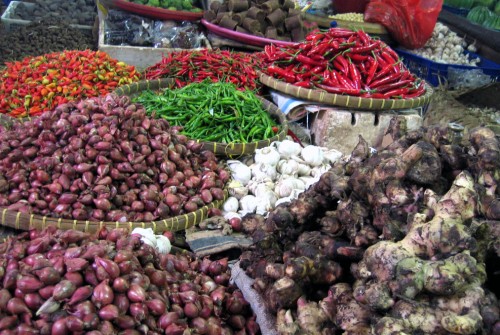

One week in Saigon
in Elsewhere in Asia/Pacific: Dining
Posted
I can almost smell that bowl of pho from Pho 24 ! Thanks for the report - gotta start planning for another trip to Saigon!
! Thanks for the report - gotta start planning for another trip to Saigon!